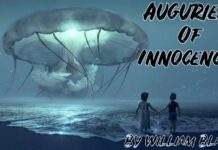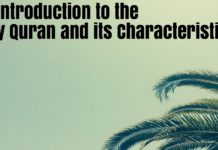Write A Note On Ted Hughes’s Nature Poetry is efficient and attractive for readers.
THE ATTITUDES OF THE ROMANTIC POETS AND OF TENNYSON
Table of Contents
Hughes’s attitude to, and treatment of, Nature distinguishes him from almost all other poets. Nature as an independent theme in poetry came into prominence in the work of the Romantic poets-Wordsworth, Coleridge, Byron, Shelley, and Keats. Each of the Romantic poets had a distinctive attitude to Nature and treated Nature in his own way though, of course, there were certain marked similarities in their treatment of the subject. Shelley showed a preference for the dynamic aspects of Nature, such as the West Wind and the cloud. Byron had a preference for the huge and gigantic aspects of Nature, such as mountains, lakes and oceans.
Keats dwelt mainly upon the tranquil and peaceful aspects of Nature, such as the landscape in calm weather; and he was chiefly attracted by the aesthetic appeal of Nature as illustrated in his poem about the moon goddess. Wordsworth, the greatest of all the Nature-poets in English literature, saw the existence of a divine spirit in all objects of Nature and, at the same time, he believed in the educative and moral value of Nature for human beings. In his view, nature was the best moths, guardian, and nurse of man. Coleridge shared Wordsworth’s pantheism, but he also expressed the view that Nature merely reflected the onlooker’s on the beholder’s own moods. Later, in the Victorian Age, Tennyson showed an intense love of Nature; but, under the influence of Charles Darwin’s theory of evolution, he also perceived the cruelty of nature towards man. He saw Nature “ red in tooth and claw”; and he felt compelled to ask the question whether God and Nature were at strife with each other.
HGHES’S AWE OF THE SAVAGERY OF NATURE
Hughes is a great Nature-poet too. Although keenly aware of the tranquil aspects of Nature, he dwells chiefly on wild, fierce, tameless, and cruel aspects. He is intrigued by the viciousness of Nature however this hostility doesn’t offer ascent to any inclination in him of an abhorrence of Nature. Despite the fact that he feels awed by the coldblooded side of Nature, he is yet an extraordinary Nature-darling.
GRAPHIC NATURE-IMAGERY, COUCHED IN STRIKING WORDS AND PHRASES
As Write A Note On Ted Hughes’s Nature Poetry, Hughes’s Nature-imagery is most graphic. We find his Nature-imagery not only to be most vivid and original phrases. He uses all his linguistic power and skill to convey to us his close observation of Nature and his impressions of natural scenery. Rain is one of his most outstanding Nature-poems. Here we have vivid pictures of rain, floods, frost, and after frost, rain again, with sleet in it. The rain goes on and on, and the weather gets colder and colder. “The mid-evening duck douses into the splashed bushes”. The cattle find no other place except “the brimming world and the pouring sky.” The choice of words in this poem is strikingly appropriate; and the whole landscape is brought before our eyes in a most effective manner.
Buy Books Suggested By Experts
Then there is the poem October Dawn. The month of October is “Marigold”; and the cold is so intense that it seems to the poet as if the ice-age had started its hurl.” The yard and the whistling green greenery are damned”. “Ice has got its lead into place” This kind of language to describe natural scenery is really startling. Towards the end of the poem
we have a repetition of words to emphasize the idea and also to heighten the musical effect:
While a fist of cold
Squeezes the fire at the core of the world,
Squeezes the fire at the core of the heart.
NATURE’S CRUELTY TO MAN AND TO ANIMALS
In the poem November again, we have graphic Nature Imagery. After long rain, the land is as “sodden” (or soaked in water) as the bed of an ancient lake. And then we have this original and striking statement: “the land is treed with iron and birdless”; and “mist silvers the droplets on the bare thorns.” And then the poet goes on to describe the plight of a tramp who lies huddled in a ditch to protect himself against the cold. Here Nature is brought into a close relationship with man; and Nature here is certainly not kind to man. The poem Snowdrop is a short masterpiece in which the mouse, the weasel and crow to have been “moulded in brass.” Nature here is “brutal as the stars of this month.”
TWO OTHER POEMS DEPICTING NATURE IN DIFFERENT MOODS
The poem Wind contains a most graphic description of a storm raging on the sea. The tempest seems to “wield bladelight,” and to “flex its muscles.” This poem has an autobiographical interest because it is based on a personal experience of the poet. The fury of the storm is conveyed to us by such effective phrases as “the woods crashing;” “the hills booming;” and “the winds stampeding the fields.” There is a poem entitled Root, Stem, Leaf which consists of three sections, each section having originally been a separate and independent poem. Here again we have vivid Nature Imagery. A river, flowing through the valley, seems to be offering a prayer to its own waters for peace. This means that the flow of the water is uncontrollably rapid and wild. This river had emerged from its source in the form of a small waterfall, and had then moved into the valley. Then there is, in the same poem, the imagery of plants such as the foxglove and the harebell growing on the steep slope. In this poem again, Nature is linked to humanity because there is a woman who has grown so old that her eyesight has become dim, and she has been stricken by arthritis, while Nature continues to be just as she used to be.
ANTHROPOLOGICAL ELEMENT IN TWO OF THE NATURE-POEMS
Then there are two short poems. Thistles and Fern, which again contain vivid imagery and which have also been linked to humanity. Each thistle seems to have a touch of wood about it, producing the impression that each thistly is a buried Viking who has come back to life in order to wage war once again. As for the fern, it seems to be dancina solemnly; and its movements are comparable of the movements of that ornamental feather which a warrior wears in his helmet. In both these poems, Hughes has given us evidence of his anthropological interest because he has attributed certain human traits to the plants and the shrubs.
NATURE AS THE ENEMY OF MAN
In the context of the destructive aspect of Nature, we cannot help feeling that Hughes thinks Nature to be man’s enemy. He presents man as a prey and a victim of Nature. In the poem The Hawk in the Rain, the speaker in the poem feels that the banging wind “thumbs his eyes, throws his breath, and tackles his heart”, while the rain “hacks his head to the bone.” He imagines himself as “a bloodily grabbed dazed last-moment-counting morsel in the earth’s mouth.” Besides the savagery of Nature in this poem, we may also note the striking originality in the use of words and in the coining of phrases. The imagery too is most vivid. In the poem November, a tramp is depicted as the victim, though this tramp has developed a lot of will-power and determination to force the extremes of climate.
In this Write A Note On Ted Hughes’s Nature Poetry, Here we find the wind hardening; the rain becoming heavier; the field jumping and smoking; and the thorns quivering. Rain is “plastering the land which shines like hammered lead.” In this “drilling rain”, the tramp sleeps indifferently. It is his strong trust which enables him to survive the cruelty on Nature. In October Dawn the poet anticipates such intense cold as would seem to herald another ice-age reminding him of Mammoth and of Sabre’s tooth. Soon tons and tons of ice would cover the rivers, thus immobilizing them completely. It is only by implication that Nature’s cruelty to man has been expressed. It seems to the poet that his house has been floating and drifting on the sea like a ship; and the inmates of the house sit before the fireplace in a benumbed state of mind verging on paralysis.
THE FRAGILITY OF MAN VIS-À-VIS NATURE
In the poem Wind, to which a reference has already been made, we come across superbly physical images which transform the so-called ordinary objects into objects of wonder. What comes crashing through a welter of imagery in this poem is the sense of the fragility of people menaced by the elements, and on the point of being overwhelmed by them.
THE SYMBOLISM IN THE POEM, OCTOBER DAWN
Sometimes Hughes’s Nature-imagery pertains to the prehistoric world when man was a creature among creatures, an animal battling for survival. As a result of his obsession with the dark, mysterious world of the past, Hughes feels that the modern world does not constitute a big enough challenge, and he therefore constantly invokes the prehistoric past. This is evident in the poem October Dawn. Here the poet expresses the view that another ice-age is about to begin. The original ice-age was the time when the mammoth mysteriously froze into extinction. Hughes wants to give the mammoth a second chance in the form of another ice-age when the mammoth and Sabre-tooth would celebrate a reunion. Here Hughes is invoking a chaotic past because he feels that the mammoth is massive enough to make man realize how puny has been man’s role in the evolutionary process. The invocation of the mammoth is an image which represents the energy that man’s frigid intellectuality extinguished. .
WORDSWORTHIAN ECHOES IN THE HORSES
As already indicated; Hughes is not unaware of the kinder and milder aspects of Nature. In the poem, The Horses, he paints a picture of the intense cold of the morning; and this picture again represents the savagery of Nature. But, in the midst of this shivering and almost freezing natural scenę, there stand ten horses who show no excitement or agitation or discontent by stamping on the ground or snorting.
The horses are here presented as personifications of patience and endurance. At the same time the closing lines of the poem contain unmistakable Wordsworthian echoes. But Write A Note On Ted Hughes’s Nature Poetry, The poet here says that, in the din of the crowded streets, he would like to recall this lonely spot between the streams and the clouds, and he would like to hear the curlews uttering their sounds, and would like also to hear the horizons endure. In other words, the poet here contrasts the quiet and the tranquillity of a scene of nature with the tumult of the crowded streets of a city. And once again we may note the originality of expression: “hearing the horizons endure.” Apart from the alliteration here, we find the poet expressing the silence and durability of the horizons through his sense of hearing; and this is certainly something strange and novel for us.
Theme Of Violence In Ted Hughes’s Poetry


























